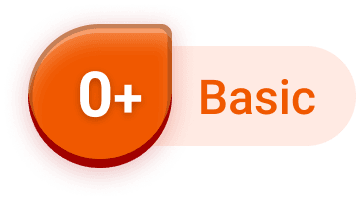You may have noticed (you did, right?) that our business account pages, tables and reviews come with scores. They’re there to help consumers figure out how good a company and its products are, at a single glance. But they wouldn’t be fair, and we wouldn’t be transparent, if we didn’t tell you how we came up with them.
We publish 2 types of score:
- Finder’s expert score. Our experts look at the features of a product (in this case, a business account), how much it costs and what it offers to users, then rate it.
- User reviews. We ask you to tell us about your experience as a customer of the brands we cover. You can submit a comment directly through the relevant review, and each year we gather more user reviews through a customer survey. We show the results of this survey in an annual league table, and use it to determine our annual customer satisfaction awards, too.
What is the Finder score?
Our expert team evaluates various products in our database, assigning each one a score out of 10. A higher score means the product is more competitive and may offer better value.

If you want peace of mind, this rating will give it to you. These products offer the best value and outcomes considering various product features, terms, conditions and price.

Well-balanced products that provide what you need, offering a healthy mix of competitive features at a good price. However, they’re not quite the best in class.

Bottom line: You can find better, but these products still offer reasonable value and have the basics sorted.

These products may not offer much value in the long run, and there are better options available.
What factors do we take into account?
We assess products across a number of key areas:
- Fees. We consider whether there is a monthly fee for the account and also whether the account charges for things like cash deposits, ATM withdrawals, paying a direct debit or having your bank card delivered.
- Customer service. We score this based on user feedback, industry reports, customer reviews and forum discussions.
- Accounting software integrations. We score this based on which accountancy software packages the account integrates with.
- Payment features. Can you deposit cash and cheques into your account, as well as make and receive international payments? These features are not as universal as you might think. We also examine whether there are other payment features available, such as a cashback programme or option to round-up spare change from your purchases.
- Extra features. Here, we look at additional tools that may come with an account, such as additional employees cards, expenses management the ability to create and manage invoices.
We average all these scores to come up with an overall Finder score.
Your reviews and our customer survey
In January 2025, we ran a customer satisfaction survey on business banking providers. The survey asked 752 respondents how satisfied they are with their business account on a scale from 1 to 5, and also whether they would recommend it to a friend or not.
You can see review stars at the top of our review pages, if we’ve received more than 10. These are from consumers just like you who use our site and want to review the products and providers they use. We include ratings out of 5 and responses we’ve received in our annual customer satisfaction surveys.
★★★★★ – Excellent
★★★★★ – Good
★★★★★ – Average
★★★★★ – Subpar
★★★★★ – Poor
We also show the percentage who would recommend each provider in a league table in guides and on our awards pages.
More guides on Finder
-
Setting up a business as a sole trader
Your step-by-step guide to setting up your business as a sole proprietorship including if you need a business bank account and business insurance.
-
Ulster Bank business bank account comparison and review
There are several business accounts on offer at Ulster Bank for companies that are registered in Northern Ireland and Ireland.
-
Best business bank accounts for limited companies (Ltd)
Is your UK business a limited company? We take a look at why you might need a business bank account and how you can go about opening one.
-
Best business bank accounts for bad credit and no credit check
If you have a less than perfect credit history, it’s still possible to get a business bank account – check out our guide to find out how.
-
Allied Irish Bank business bank account comparison and review
British businesses can open a current account with Allied Irish Bank – we take a look at what this business account offers.
-
NatWest business bank account comparison and review
NatWest offers a range of business banking options including current accounts, savings accounts and business insurance, as well as specialised accounts for startups and charities.
-
The Co-operative Bank business bank account comparison and review
The Co-operative Bank offers 5 business accounts options for a range of circumstances.
-
Santander business bank account comparison and review
Santander has some great free banking offers for startups, as well as accounts for charities and companies who hold money on behalf of clients.
-
Bank of Scotland business bank account comparison and review
Bank of Scotland offers banking solutions for businesses of all sizes as well as extensive educational resources.
-
Bank of Ireland business bank account comparison and review
Bank of Ireland offers straightforward banking options for existing businesses, as well as specialised accounts for startup or new businesses.
